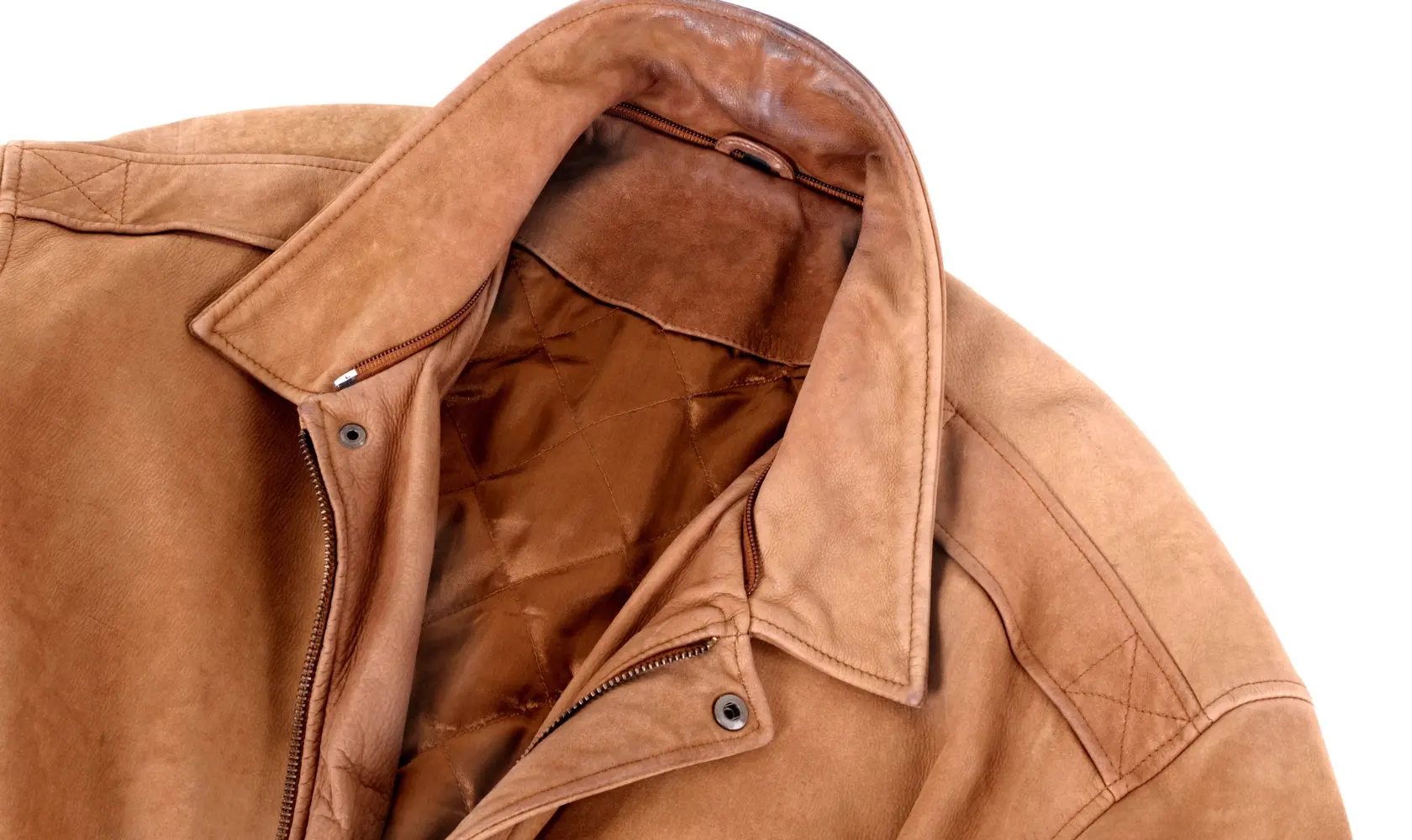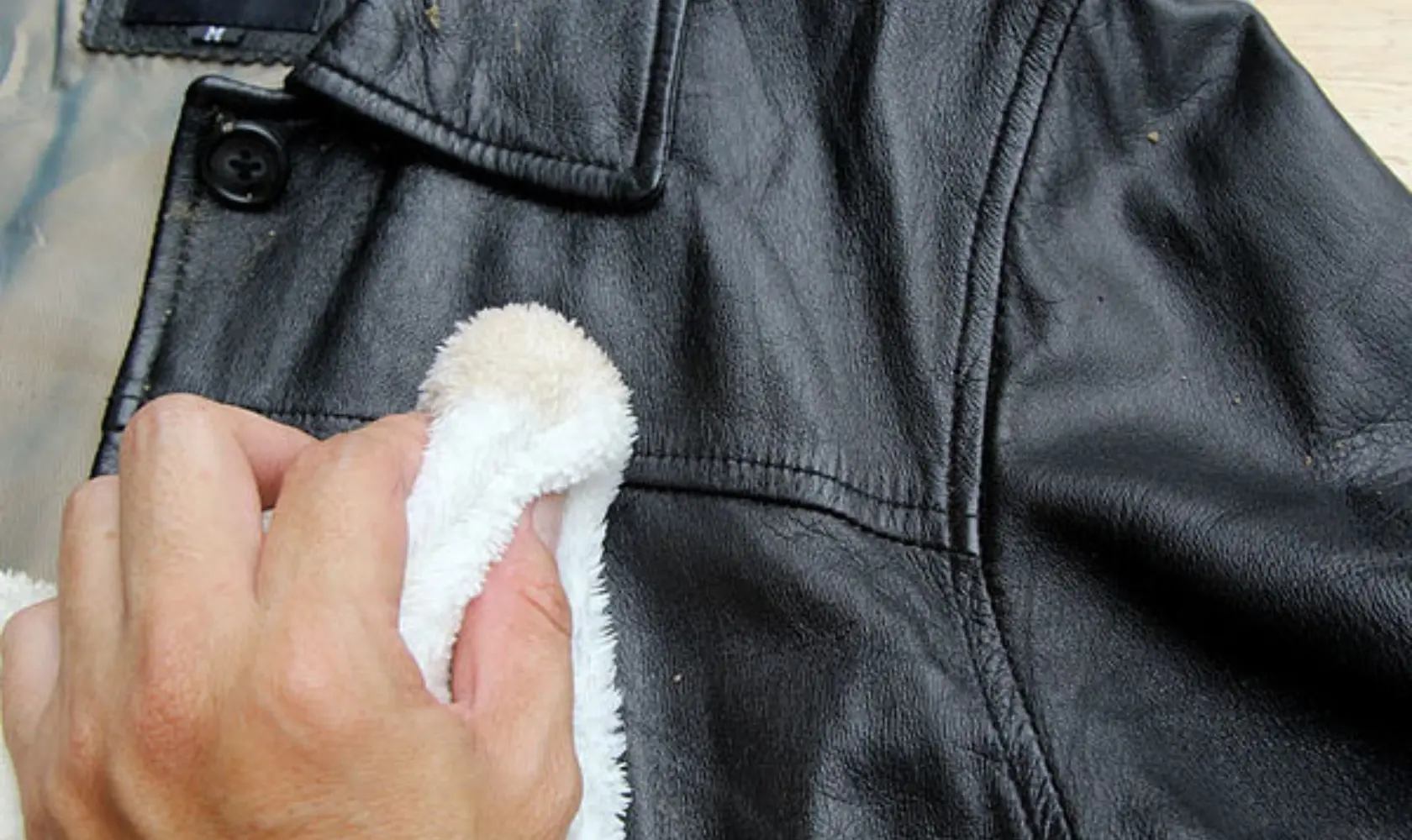Nothing beats the luxurious look of leather, especially when it’s in good condition. A well-maintained leather jacket not only complements most outfits but also stands as a classic fashion statement. To preserve its appearance and longevity, regular care is essential.
Maintaining a leather jacket involves cleaning, conditioning, and repairs. Some prefer DIY care, while others opt for professional services to keep their jackets in top shape.
Each method has its advantages and disadvantages.Read on to explore detailed tips and insights on both DIY and professional leather jacket care.
DIY vs Professional Leather Jacket Care: Pros and Cons

Understanding the pros and cons of each approach can help you decide the best way to keep your leather jacket looking its best for years to come.
DIY Care Tips
Taking care of your leather jacket at home can be rewarding and cost-effective. Here are some practical tips to help you keep your jacket in excellent condition.
Cleaning
- Regular Dusting:Use a soft, dry cloth to wipe off dust and dirt. Do this regularly to prevent buildup.
- Spot Cleaning:For minor stains, use a damp cloth with a mild soap solution. Gently rub the stain and then wipe it off with a clean, damp cloth. Avoid soaking the leather.
- Deep Cleaning: Occasionally, your jacket might need a deeper clean. Use a leather cleaner specifically designed for the type of leather your jacket is made from..
Conditioning
- Choose the Right Conditioner: Use a leather conditioner appropriate for your jacket. Avoid products containing petroleum or wax, as they can damage the leather over time.
- Apply Conditioner Lightly: Apply a small amount of conditioner to a soft cloth and rub it gently into the leather in a circular motion. Let it absorb for a few hours or overnight, then wipe off any excess with a clean cloth.
- Frequency: Condition your leather jacket every 3-6 months, depending on how often you wear it and the climate you live in. Conditioning helps keep the leather soft and prevents it from drying out and cracking.
Storage
- Hang Properly:Use a wide, padded hanger to maintain the shape of your jacket. Avoid wire hangers that can cause shoulder dents.
- Store in a Cool, Dry Place: Keep your jacket away from direct sunlight and heat sources, which can cause the leather to fade and dry out.
- Breathable Cover: Store your jacket in a breathable garment bag. Avoid plastic covers, which can trap moisture and lead to mildew.
Handling Minor Repairs
- Scuffs and Scratches: For minor scuffs, you can use a leather repair kit or a colour-matching leather balm. Apply it carefully to the affected area and buff gently.
- Loose Threads: Use a needle and strong thread to carefully re-stitch any loose seams. Be gentle to avoid further damage.
- Zipper Care: Keep zippers running smoothly by applying a small amount of beeswax or a specialised zipper lubricant.
When to Go Professional
While DIY care can handle many aspects of leather jacket maintenance, certain situations call for professional attention. Here are some conditions where it’s best to seek out a professional:
Deep Stains
- Oil and Grease Stains: These are tough to remove without specialised products and techniques. Professional cleaners have the tools and expertise to safely and effectively remove such stains.
- Ink Stains: Ink can penetrate deeply, making it hard to remove at home. Professionals use advanced solutions to tackle these stains.
Tears and Significant Wear
- Large Tears or Rips: For extensive damage, professional repair services are necessary. They can seamlessly mend the leather, often making the damage nearly invisible.
- Damage from Pets: If your jacket has been scratched or chewed by a pet, it may require professional repair to restore its original look and feel.
Significant Wear and Aging
- Fading and Discoloration: Leather can fade over time, especially in sunlight. Professionals restore colour and vibrancy with specialised dyes and treatments.
- Dry and Cracked Leather: For excessively dry and cracked leather jackets, professionals can rejuvenate them with deep conditioning treatments that penetrate deeply.
Complex Repairs
- Lining Replacement: If the lining of your jacket is damaged or worn out, replacing it requires precision and skill. Professional services can provide a high-quality replacement that matches the original.
- Hardware Replacement: Issues with zippers, snaps, or buttons often require specific tools and expertise. Professionals can replace these components without causing further damage to the leather.
Cost Comparison
When it comes to caring for your leather jacket, understanding the costs associated with DIY care versus professional services is essential. Here’s a comparison of potential costs and long-term benefits for each approach:
DIY Care
- Initial Investment: DIY care requires buying cleaning, conditioning products, and repair tools. Costs can vary based on product quality and quantity.
- Time and Effort: DIY care demands time and effort for research, purchase, application, and repairs. It’s cost-effective but time-consuming, especially for complex tasks.
- Potential Risks: Without expertise, DIY care poses a risk of damaging your jacket, leading to potential repair or replacement costs.
Professional Services
- Service Fees: Professional services for cleaning, conditioning, and repairs come with varying fees based on the extent of work and the reputation of the service provider.
- Expertise and Quality: Professionals provide expertise and specialized care for leather jackets using high-quality products and techniques that are not easily accessible to consumers, ensuring thorough care.
- Long-Term Benefits: Professional services may cost more upfront, but they extend your jacket’s lifespan and keep its value. Expert repairs can prevent future problems, saving you money.
Preservation Techniques
To preserve your leather jacket, store it in a cool, dry place away from direct sunlight and heat. Use a wide, padded hanger to maintain its shape and a breathable garment bag to protect it.
Regularly clean and condition the leather to keep it soft and prevent cracks. For long-term storage, avoid folding the jacket to prevent creases.
Pros and Cons of DIY Care vs Professional Services
Pros of DIY Care
- Cost-Effective: Saves money on cleaning and maintenance.
- Convenient: Allows you to care for your jacket on your own schedule.
- Personal Attention: You can focus on specific areas and issues as needed.
Cons of DIY Care
- Time-Consuming: Requires significant time and effort.
- Risk of Damage: Without expertise, there’s a risk of damaging the jacket.
- Limited Tools and Products: You may not have access to professional-grade products and techniques.
Pros of Professional Services
- Expertise: Professional care ensures high-quality maintenance and repair.
- Time-Saving: Saves you time and effort.
- Advanced Techniques: Access to specialised products and methods not available to consumers.
Cons of Professional Services
- Higher Cost: More expensive than DAYcare.
- Less Control: You need to trust someone else with your jacket.
- Potential Inconvenience: It requires scheduling and possibly travelling to the service provider.
Conclusion
Maintaining your leather jacket is crucial for preserving its appearance and longevity. DIY care offers cost savings and convenience but requires time, effort, and some risk of damage.
Professional services provide expert care, saving you time and ensuring high-quality maintenance, though they come with higher costs. Ultimately, the choice depends on your budget, time, and how much you value professional expertise.
By understanding the pros and cons of each approach, you can make an informed decision that best suits your needs, ensuring your leather jacket remains a stylish and durable piece in your wardrobe for years to come.













